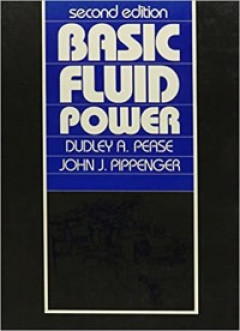Ditapis dengan
Ditemukan 6220 dari pencarian Anda melalui kata kunci:

FIRE PROTECTION (ATA 26)
- Edisi
- -
- ISBN/ISSN
- -
- Deskripsi Fisik
- -
- Judul Seri
- -
- No. Panggil
- 629.136 8 ATR f
- Edisi
- -
- ISBN/ISSN
- -
- Deskripsi Fisik
- -
- Judul Seri
- -
- No. Panggil
- 629.136 8 ATR f

Basic Fluid Power
Organized for both classroom and reference use, this text covers the many uses of liquids, hydraulics, and gases, pneumatics, as power transmission media in mechanical, electrical, and manufacturing engineering.
- Edisi
- -
- ISBN/ISSN
- 978-0130615084
- Deskripsi Fisik
- 365 hlmn ; 8.5 x 0.8 x
- Judul Seri
- -
- No. Panggil
- L-AMT-BfpD-I3-1>2
Aircraft Inspection and Repair (Acceptable Methods Techniques And Practices) …
- Edisi
- -
- ISBN/ISSN
- -
- Deskripsi Fisik
- -
- Judul Seri
- -
- No. Panggil
- L-AMT-AFAA-I1-1>2
- Edisi
- -
- ISBN/ISSN
- -
- Deskripsi Fisik
- -
- Judul Seri
- -
- No. Panggil
- L-AMT-AFAA-I1-1>2

Basic Science for Aerospace Vehicles: 3rd Edition
- Edisi
- 3
- ISBN/ISSN
- -
- Deskripsi Fisik
- ill. ; 320 p.
- Judul Seri
- -
- No. Panggil
- L-AMT-BscBM-I3-1>2
- Edisi
- 3
- ISBN/ISSN
- -
- Deskripsi Fisik
- ill. ; 320 p.
- Judul Seri
- -
- No. Panggil
- L-AMT-BscBM-I3-1>2

AUTOMATIC FLIGHT CONTROL SYSTEM (ATA 22)
- Edisi
- -
- ISBN/ISSN
- -
- Deskripsi Fisik
- -
- Judul Seri
- -
- No. Panggil
- 629.132 6 ATR a
- Edisi
- -
- ISBN/ISSN
- -
- Deskripsi Fisik
- -
- Judul Seri
- -
- No. Panggil
- 629.132 6 ATR a

Helicopter Structures (basic Handbook)
- Edisi
- -
- ISBN/ISSN
- -
- Deskripsi Fisik
- -
- Judul Seri
- -
- No. Panggil
- L-AMT-Hstr-I1-1>2
- Edisi
- -
- ISBN/ISSN
- -
- Deskripsi Fisik
- -
- Judul Seri
- -
- No. Panggil
- L-AMT-Hstr-I1-1>2

Airframe and Powerplant Mechanics (Powerplant Handbook)
This advisory circular is printed for persons preparing for a mechanics certificate with a powerplant rating. It is intended to provide basic information on principles, fundamentals, and technical procedures in the areas relating to the powerplant rating. This is designed to serve as a guide for students enrolled in a formal course of instruction, as well as the individual who is studying on …
- Edisi
- -
- ISBN/ISSN
- -
- Deskripsi Fisik
- -
- Judul Seri
- -
- No. Panggil
- L-AMT-ApFA-I1-1>2

Aircraft Maintenance Management
- Edisi
- -
- ISBN/ISSN
- -
- Deskripsi Fisik
- -
- Judul Seri
- -
- No. Panggil
- 629 136 AIR a
- Edisi
- -
- ISBN/ISSN
- -
- Deskripsi Fisik
- -
- Judul Seri
- -
- No. Panggil
- 629 136 AIR a

Engine Maintenance System
- Edisi
- -
- ISBN/ISSN
- -
- Deskripsi Fisik
- -
- Judul Seri
- -
- No. Panggil
- 629.136 AIR e
- Edisi
- -
- ISBN/ISSN
- -
- Deskripsi Fisik
- -
- Judul Seri
- -
- No. Panggil
- 629.136 AIR e

Airframe Maintenance System
- Edisi
- -
- ISBN/ISSN
- -
- Deskripsi Fisik
- -
- Judul Seri
- -
- No. Panggil
- 629 136 AIR a
- Edisi
- -
- ISBN/ISSN
- -
- Deskripsi Fisik
- -
- Judul Seri
- -
- No. Panggil
- 629 136 AIR a

Aircraft Instrument
- Edisi
- -
- ISBN/ISSN
- -
- Deskripsi Fisik
- -
- Judul Seri
- -
- No. Panggil
- 629.135 AIR a
- Edisi
- -
- ISBN/ISSN
- -
- Deskripsi Fisik
- -
- Judul Seri
- -
- No. Panggil
- 629.135 AIR a

Technology of Mechanics II
- Edisi
- -
- ISBN/ISSN
- -
- Deskripsi Fisik
- -
- Judul Seri
- -
- No. Panggil
- 620.1 AIR t.2
- Edisi
- -
- ISBN/ISSN
- -
- Deskripsi Fisik
- -
- Judul Seri
- -
- No. Panggil
- 620.1 AIR t.2

Technology of Mechanics I
- Edisi
- -
- ISBN/ISSN
- -
- Deskripsi Fisik
- -
- Judul Seri
- -
- No. Panggil
- 620.1 AIR t.1
- Edisi
- -
- ISBN/ISSN
- -
- Deskripsi Fisik
- -
- Judul Seri
- -
- No. Panggil
- 620.1 AIR t.1

Aircraft Materials
- Edisi
- -
- ISBN/ISSN
- -
- Deskripsi Fisik
- -
- Judul Seri
- -
- No. Panggil
- 629.134 AIR a
- Edisi
- -
- ISBN/ISSN
- -
- Deskripsi Fisik
- -
- Judul Seri
- -
- No. Panggil
- 629.134 AIR a

Computer Aided Design
- Edisi
- -
- ISBN/ISSN
- -
- Deskripsi Fisik
- -
- Judul Seri
- -
- No. Panggil
- 670.285 AIR c
- Edisi
- -
- ISBN/ISSN
- -
- Deskripsi Fisik
- -
- Judul Seri
- -
- No. Panggil
- 670.285 AIR c

Runway Is Clear
- Edisi
- -
- ISBN/ISSN
- 978-602-0931-71-5
- Deskripsi Fisik
- ix, 57 hlm; 21 cm
- Judul Seri
- -
- No. Panggil
- 369.4 AID r
- Edisi
- -
- ISBN/ISSN
- 978-602-0931-71-5
- Deskripsi Fisik
- ix, 57 hlm; 21 cm
- Judul Seri
- -
- No. Panggil
- 369.4 AID r

Pengantar Manajemen
- Edisi
- -
- ISBN/ISSN
- -
- Deskripsi Fisik
- -
- Judul Seri
- -
- No. Panggil
- 658.001 AIR p
- Edisi
- -
- ISBN/ISSN
- -
- Deskripsi Fisik
- -
- Judul Seri
- -
- No. Panggil
- 658.001 AIR p

Basic Electronic
- Edisi
- -
- ISBN/ISSN
- -
- Deskripsi Fisik
- -
- Judul Seri
- -
- No. Panggil
- 621.381 AIR b
- Edisi
- -
- ISBN/ISSN
- -
- Deskripsi Fisik
- -
- Judul Seri
- -
- No. Panggil
- 621.381 AIR b

Technical Drawing
- Edisi
- -
- ISBN/ISSN
- -
- Deskripsi Fisik
- -
- Judul Seri
- -
- No. Panggil
- 604.2 AIR t
- Edisi
- -
- ISBN/ISSN
- -
- Deskripsi Fisik
- -
- Judul Seri
- -
- No. Panggil
- 604.2 AIR t

Applied Physic
- Edisi
- -
- ISBN/ISSN
- -
- Deskripsi Fisik
- -
- Judul Seri
- -
- No. Panggil
- 621 AIR a
- Edisi
- -
- ISBN/ISSN
- -
- Deskripsi Fisik
- -
- Judul Seri
- -
- No. Panggil
- 621 AIR a
 Karya Umum
Karya Umum  Filsafat
Filsafat  Agama
Agama  Ilmu-ilmu Sosial
Ilmu-ilmu Sosial  Bahasa
Bahasa  Ilmu-ilmu Murni
Ilmu-ilmu Murni  Ilmu-ilmu Terapan
Ilmu-ilmu Terapan  Kesenian, Hiburan, dan Olahraga
Kesenian, Hiburan, dan Olahraga  Kesusastraan
Kesusastraan  Geografi dan Sejarah
Geografi dan Sejarah